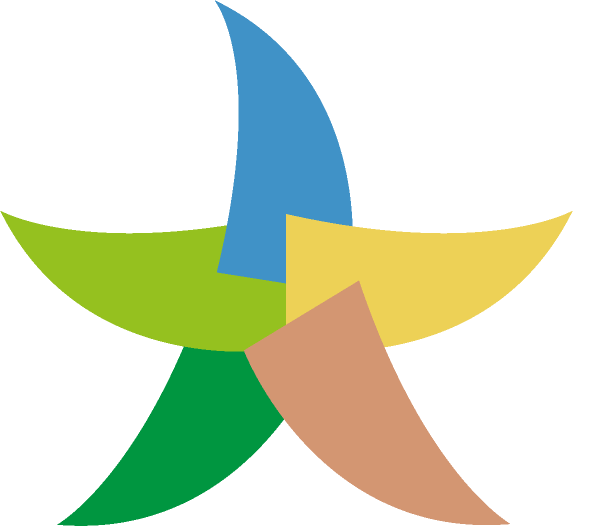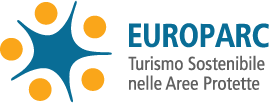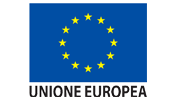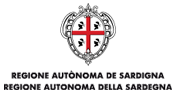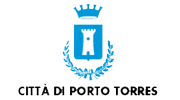Asinara Park
European projects
Asinara National Park works with various partners and participates in national and international projects to monitor animal species, safeguard the environmental ecosystem, and develop sustainable and responsible enjoyment practices.
Below is the list of European projects:
Clean Sea LIFE
Clean Sea LIFE is a project led by the Asinara Park Authority with partners CoNISMa, Cetacea Foundation, Legambiente, MedSharks, Caprera Sailing Center. Launched in late 2016 and ending on January 31, 2021, it has become a flagship project of the European Commission’s LIFE program.
The project, aimed at raising awareness of marine litter, in four years has created a community of more than 170,000 divers, boaters, fishermen, students and citizens actively engaged in protecting Italy’s coasts and seabeds. The community has also been joined by 500 diving, boating and fishing centers, tour and beach operators, institutes and large companies, contributing to the fight against plastic waste at sea and promoting active engagement of their customers.
Outreach activities included more than 1,000 meetings with the public, including lectures at museums, clubs and associations, classroom lectures, events on the beach or on military ships, with training seminars involving 300 teachers and 5,000 students. More than 112 tons of waste removed from the environment in four years of activity, 92 of which emerged thanks to the largest underwater cleanup operation ever organized in Italy, which involved professional fishermen, recreational divers and the military and resulted in the removal of more than 600 lost and often still fishing “ghost” nets, creels and lines.
Clean Sea LIFE has provided data, studies, and research to local, national, and European authorities useful in developing laws and regulations to limit litter at sea.
STRONG SEA - Survey and TReatment ON Ghost nets SEA LIFE
The project “STRONG SEA – Survey and TReatment ON Ghost nets SEA LIFE” was funded by the LIFE program, Nature and Biodiversity priority area, with funds established in the 2014-2020 programming. Participating in its implementation are Agris Sardegna – Agency for Agricultural Research, the Forestry and Environmental Surveillance Corps, MCM Cooperative Society, Asinara National Park Authority and Petra Patrimonia Corsica.
It aims to protect and improve the conservation status of the priority habitat of Posidonia oceanica seagrass beds and coralligenous reefs, both of which are included in Directive 92/43/EEC and the Natura 2000 network of sites.
The project, which began in December 2021, will last for five years. The selected habitats were chosen for their high ecological and environmental value and for their representativeness in the study area, which includes the Gulf of Asinara and the northwestern coast of Sardinia. Through this project we aim to protect and conserve marine habitat, preserving biodiversity and improving ecosystem health. The project focuses on the identification and treatment of so-called “ghost nets,” or abandoned or lost fishing nets that pose a significant threat to marine wildlife.
The main actions are:
► Preparatory, preparatory to obtaining permits to conduct activities at sea and obtaining information from fishermen on the presence of missing fishing gear.
► Awareness raising, aimed at informing the community, including the target audience of fishermen, about the operational goals and mission of the project.
► Specific, related to the conservation and protection of marine habitats from the threat of dispersed fishing material.
Finally, the “SEAWatcher” application was created for immediate reporting of fishing gear lost at sea, which can be used by fishermen, citizens, divers and tourists.
An intensive awareness campaign is underway, including the production of gadgets made from the recovered material, flyers, posters, brochures, leaflets, questionnaires and a code of conduct.
NEPTUNE (Underwater natural and culTUral patrimoNy and subaquE management)
The project was established to create a cross-border network of pilot underwater sites of high natural and cultural interest, implement common systems of sustainable management of underwater heritage, and raise awareness of the natural and cultural value of cross-border underwater heritage among managers and users.
The project made it possible to implement a strategy for the management of underwater routes whose enjoyment, achieved through sustainable recreational underwater activities, could be accessible to all and contribute to the promotion and enhancement of the area in terms of tourism with greater awareness of the importance of protecting the marine environment.
The activities implemented by the Region of Sardinia mainly focused on the pilot site of Asinara Island because of its naturalistic and cultural significance.
Other project partners included the Management Consortium of the Portofino Marine Protected Area (lead partner), the Region of Liguria, the Region of Sardinia, the Tuscan Archipelago National Park, the Parc national de Port-Cros, Région Sud Provence – Alpes – Côte d’Azur and the Centre de Découverte Mer et Montagnein.
The following are the main actions:
- Knowledge and assessment of cross-border underwater natural and cultural heritage and creation of “blue trails,” which can be viewed on the Neptune portal.
- Enhancement of the natural and cultural heritage present, improving its accessibility (physical and virtual) and making the underwater heritage usable even to those who do not dive, through “blue trails” or pilot sites and photos/films of the cross-border area.
- Development, sharing and implementation of sustainable management strategies.
- Creation of an integrated, cross-border heritage enhancement and promotion tool through “the NEPTUNE portal” www.neptuneproject.eu
- Raising users’ awareness of the value of underwater natural and cultural heritage.
Among the project results, the following were inaugurated on the Island of Asinara: the Underwater Environmental and Archaeological Route of Cala Reale, characterized by important naturalistic values and the presence of numerous artifacts from the Roman period and equipped to be enjoyed also by users with motor and visual disabilities, and the Underwater Environmental Route of Punta dei Corvi whose main feature is the presence of granite panettones that rise from the bottom alternating and creating the ideal habitat of Brown Groupers.
EcoSTRIM (Eco-Sustainable TouRism Investments to stimulate and promote the competitiveness and innovation of the Marine cross-border cooperation activities)
The EcoSTRIM project aimed to build a cross-border spatial strategy for the development and promotion of sustainable tourism and sports activities dedicated to the marine and coastal environment. Headed by the CIMA Foundation, in addition to Asinara National Park – Asinara Island Marine Protected Area, the partnership was shared by ANCI Toscana, Tuscany Region, Mairie d’Ajaccio, the Parc national de Port Cros and Confindustria Centro Nord Sardegna.
The overall objective of the project was to improve the competitiveness of enterprises in the blue tourism supply chain in domestic and international markets through the direct involvement of public administrations and tour operators.
EcoSTRIM consisted of 3 components:
Quality Networks and Ecolabels: aimed at creating and implementing quality eco-labels and promoting eco-sustainable tourism offerings by involving public administrations, tour operators and tourists.
New products: component aimed at the development of new tourism products, the growth of environmentally sustainable outdoor activities in the context of the blue economy, the enhancement of slow tourism offerings, and allowed the sharing of best practices to capitalize and implement products in other contexts and territories.
Accessibility: aimed at improving the accessibility of areas of tourist interest that are currently inaccessible, taking action to ensure access for people with reduced mobility or visual impairment, and to optimize access in an environmentally sustainable mode to protected area sites.
The direct involvement of regional bodies and local operators has consolidated the synergies necessary to maintain activities even after the end of the project.
